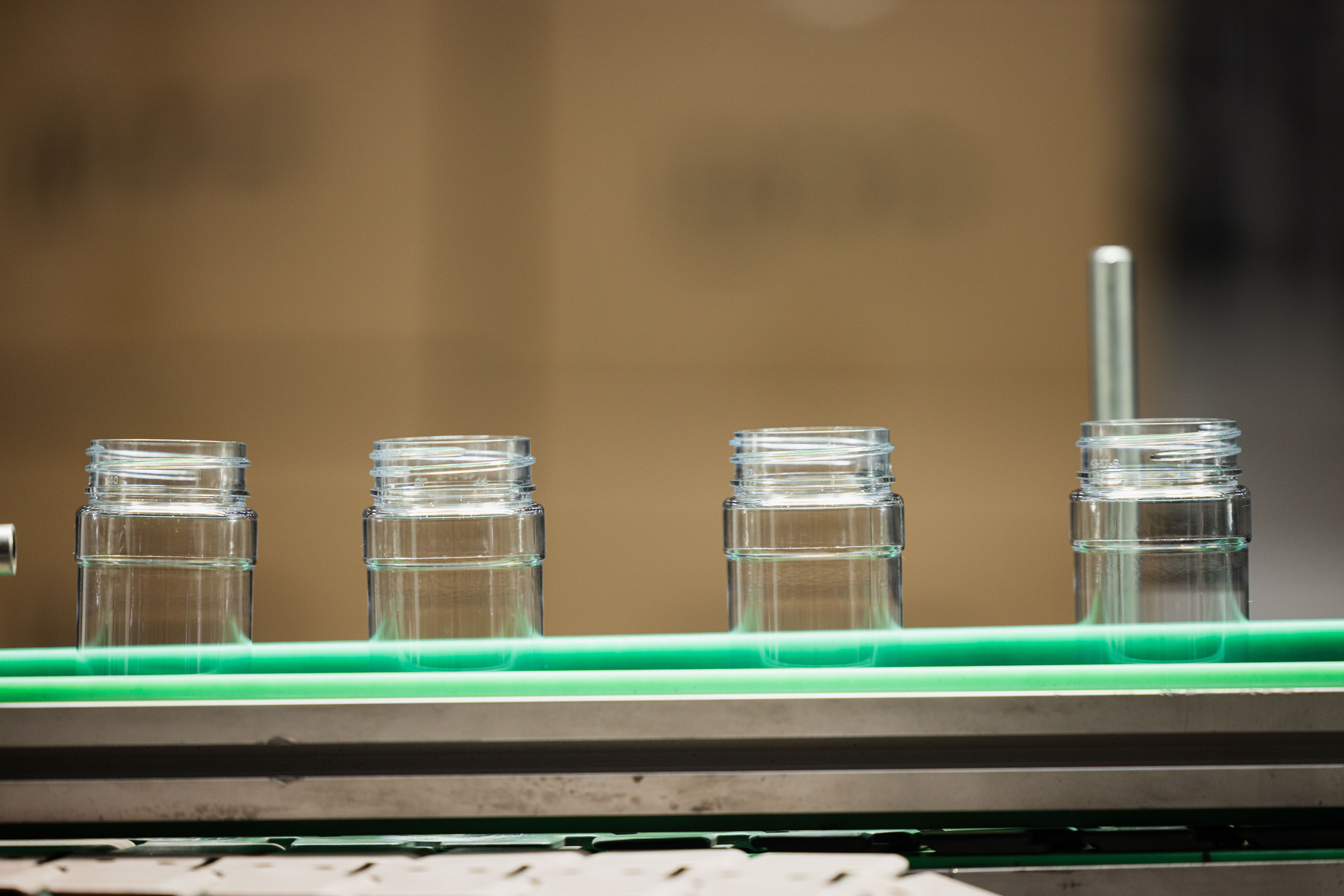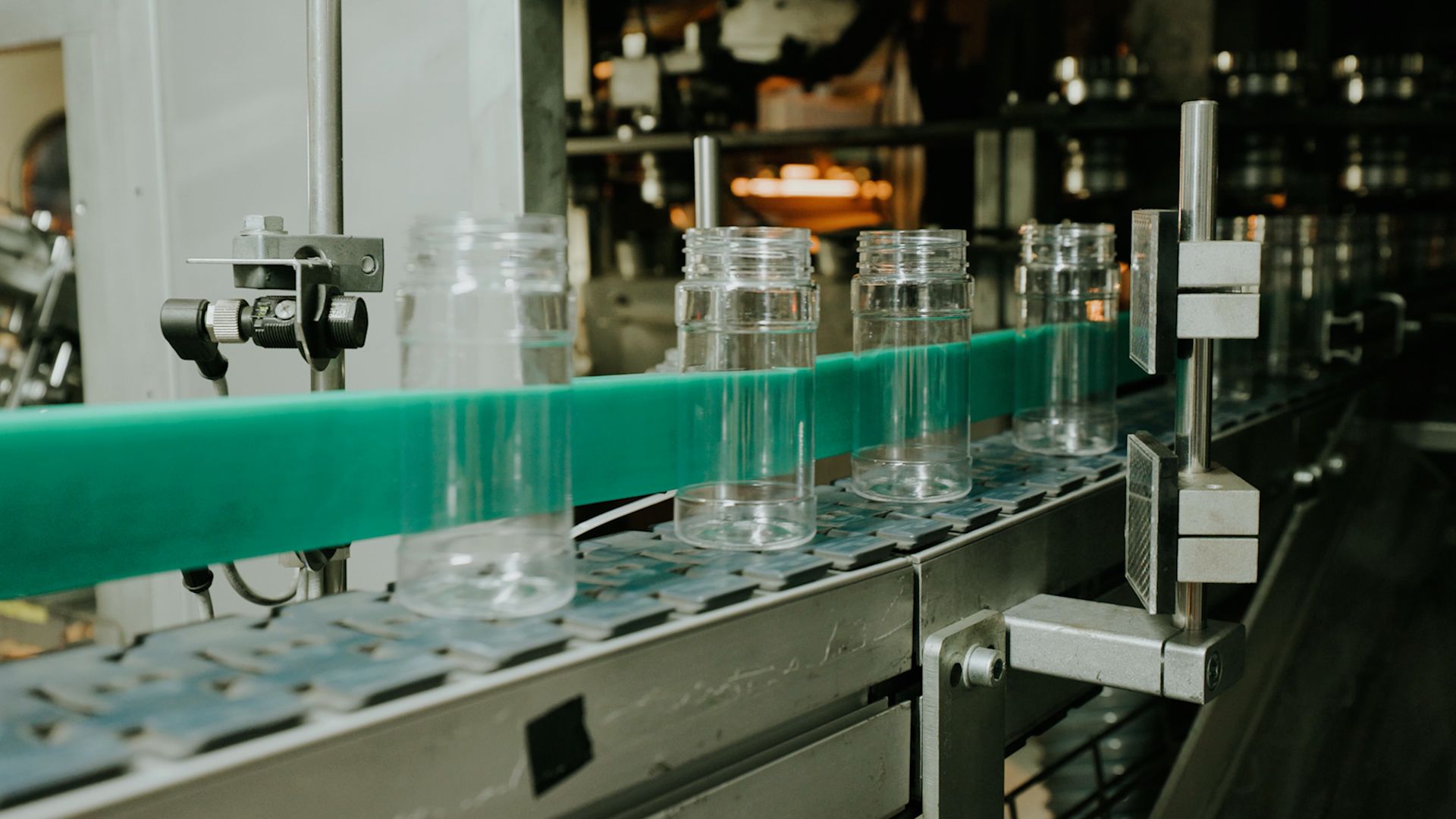Which Plastics Are Considered “Food Quality” by the FDA?
Plastic packaging is essential when it comes to maintaining the freshness and quality of food during transport, as well as prolonging its shelf life. But when it comes to food packaging, not all plastics are created equal. To that end, the Food and Drug Administration (FDA) has established guidelines for safe, direct contact with food.
In order to be considered “food grade,” a plastic must meet the safety requirements of the types of food it comes into contact with. For example, some foods (such as tomato sauce) are acidic and might leach chemicals from non-compliant plastics.
In this article, we’ll be examining the seven basic categories of plastic and their appropriateness for storing food and beverages.
Plastics That Are Safe for Food Storage
1. PET/PETE (Polyethylene Terephthalate)
Most, if not all, of the plastic jars and beverage containers in your home are made from PET plastic. This clear, strong, and lightweight plastic repels microorganisms and doesn’t corrode, which makes it an overall ideal material for food and beverage storage, even for the long term.
What truly sets PET apart from the rest is its reusability. Many plastics are only FDA-compliant and food safe in their virgin (unrecycled) state. However, PET can be recycled many times and still remain FDA-approved for food contact.
2. HDPE (High-Density Polyethylene)
HDPE is very strong, which is why a plastic jug weighing 2 ounces can easily contain a gallon of milk. It is impact-resistant, weather-resistant, and long-lasting.
In addition to milk jugs, HDPE is also used to make butter containers, cereal box liners, and thicker food storage buckets.Although HDPE is recyclable, it is possible for it to become unsafe if it’s recycled too many times. That’s why the FDA reviews HDPE on a case-by-case basis.
4. LDPE (Low-Density Polyethylene)
Similar to HDPE, LDPE tends to be less rigid, which makes it perfect for plastic bags, squeeze bottles, six-pack rings, and more. In its virgin state, LDPE is chemically resistant, repels microorganisms, and doesn’t leach toxins when used to store foods. However,
recycled LDPE is not considered safe for food contact.
5. PP (Polypropylene)
Polypropylene is often used for single-serve containers, such as pudding or yogurt cups. It also shows up in potato chip bags, margarine containers, and cereal box linings. In addition to being FDA-approved for food contact, polypropylene is microwave safe and nonvolatile, which means it won’t react with acids, bases, or liquids.
Polypropylene is recyclable, but unfortunately doing so is a difficult and expensive process. As a result, nearly all (97-99%) of polypropylene ends up in the landfill after only one use.
Plastics That Are NOT Safe for Food Storage
3. PVC (Polyvinyl Chloride)
Although it is often used for wrapping food in the short term (e.g. sandwich bags), PVC is not recommended for extended use as it contains toxins that leach throughout its entire life cycle. Most consumer recyclers will not take PVC products.
6. PS (Polystyrene)
Frequently confused with the trademarked Styrofoam(tm), polystyrene is often used for disposable drinking cups, takeout containers, and packing peanuts. Polystyrene is not recyclable and, unfortunately, accounts for about 35% of U.S. landfills. In addition, a number of harmful chemicals in polystyrene (including the eponymous styrene) may be leached into food or beverages with prolonged contact.
7. Other
This miscellaneous category of plastic includes acrylic, polycarbonate, polyactic fibers, nylon, and fiberglass. Because it covers such a broad spectrum of plastics, the recycling protocols aren’t standardized for this category. The primary concern is that some of these plastics contain Bisphenol A (BPA), which can affect the normal function of hormones if leached into food or drink products.
Looking for FDA-Compliant Food Safe Plastic Packaging?
If you’re looking for the
perfect recycled plastic containers to store your food and/or beverage products, be sure to check out Plascene’s extensive selection of
PET and HDPE jars and bottles. Or if you have something more specific in mind, visit our site to learn about our custom options and to get a free quote.
References
“Which Plastics Are Safe for Food Storage?” —
Utah State University | Extension
“Which Plastics Are Safe for Food Storage and How to Use Them” —
EZ-Prepping
“Which Plastics Are Recyclable By Number” —
Almanac
“Which Plastic Can Be Recycled?” —
Plastics For Change

How Recycled Polypropylene (rPP) Is Changing the Future of Packaging in the U.S.





